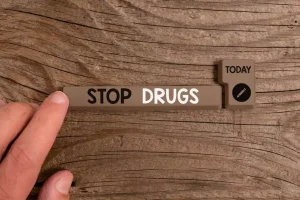
cocaine addiction treatment can be devastating for the person who uses cocaine, severely impacting their lives and relationships. Keep reading to learn more about what cocaine is, signs of cocaine use and how to tell if someone is on cocaine, signs of cocaine addiction, statistics, and how to find addiction treatment near you. Counseling and other types of therapy are the most common treatments for cocaine use disorder. Sessions with a trained therapist can help you make changes to your behaviors and thought processes. You may need to stay in a rehabilitation center (also known as rehab) for intensive therapy and support.
Where will I have my treatment?
- When stimulated by dopamine, cells in the NAc produce feelings of pleasure and satisfaction.
- Cocaine causes many types of intermediate-term alterations in brain cell functioning.
- Ask a healthcare provider about programs and services for people affected by another person’s cocaine use.
- A third limbic region, the frontal cortex, is where the brain integrates information and weighs different courses of action.
Once someone becomes addicted, however, the frontal cortex becomes impaired and less likely to prevail over the urges (Nestler and Malenka, 2004; Volkow, Fowler, and Wang, 2003). If a person uses cocaine, it can have both short- and long-term effects on their brain. Some effects of cocaine are almost instantaneous and typically last from a few minutes to 1 hour. This article discusses the short- and long-term https://ecosoberhouse.com/ effects that cocaine can have on the brain, other health considerations, substance use disorder, and when to consider speaking with a doctor. Most drugs affect the brain’s “reward circuit,” causing euphoria as well as flooding it with the chemical messenger dopamine. A properly functioning reward system motivates a person to repeat behaviors needed to thrive, such as eating and spending time with loved ones.
The symptoms of cocaine detox
Information provided by NIDA is not a substitute for professional medical care or legal consultation. Thus, if you or a loved one are concerned about withdrawal symptoms from cocaine use, contact a healthcare professional for guidance. In early tests, a vaccine helped reduce the risk of relapse in people who use cocaine. The vaccine activates your immune system to create antibodies that attach to cocaine and stop it from making its way into your brain.
Drugs & Supplements
Injecting it carries the highest risk of bloodborne infections, but you can also contract infections by smoking and snorting coke. Some people process cocaine into a rock and smoke it, which we’ll get to next. Cocaine — aka coke, blow, and snow — is a powerful stimulant made from the leaves of the coca plant. American Addiction Centers (AAC) is committed to delivering original, truthful, accurate, unbiased, and medically current information. We strive to create content that is clear, concise, and easy to understand. If you recognize some of the above criteria in your own drug-related behaviors or those of a loved one, you might want to reach out for additional evaluation.
What happens to the brain when a person takes drugs?

Within this broader category, CM and CBT-SUD currently have the greatest empirical support in positive treatment outcomes (eg, reduced cocaine use), collectively garnered over approximately 3 decades of research and application. Nonetheless, ongoing barriers remain including implementation barriers such as stigma towards these practices, pragmatic limitations (eg, cost, staff availability), and model adherence. Though ongoing research efforts are refining the extent and application of these modalities (eg, computer-assisted methods like CBT4CBT),179 there remains a need for greater dissemination and implementation of both CM and CBT-SUD for CUD. Mixing alcohol and cocaine has also been shown to increase cravings for each substance, leading to a higher risk of dependence. For more information on symptoms, causes, and treatment of stimulant-related disorders, see our Diagnosis Dictionary. Cocaine’s immediate euphoric effects include a state of hyperstimulation, reduced fatigue, and mental clarity.
COCAINE’S INTERMEDIATE-TERM EFFECTS: CHANGES IN GENE EXPRESSION
Levels of ΔFosB in the limbic system correlate with addiction-like behaviors in mice and may precipitate very long-lasting changes to nerve cell structure. Further pursuit of this and similar leads are first steps toward a complete understanding of the transition from cocaine abuse to addiction—and, ultimately, more effective treatments for those who are addicted. Using it increases your risk of serious and sometimes life-threatening medical conditions like heart attack, stroke and drug overdose. Cocaine use disorder (addiction) can affect your personal relationships. Cognitive behavioral therapy may help people recover from cocaine use disorder.
Images of Brain Development in Healthy Children and Teens (Ages 5-

Cocaine addiction is not considered a behavioral problem—it is classified as a substance use disorder in which biological, psychological, environmental, and genetic factors are thought to predispose a user to addiction. By recognizing the signs of addiction, those who are addicted can identify the problem, seek professional treatment, and experience lasting recovery. This happens when a person uses so much cocaine that it causes a life-threatening reaction or death. Because cocaine is a highly addictive substance, it can cause dependence ― which is where your body becomes dependent on the drug and needs more of it to have the same effects.
- Snorted, smoked, or injected, cocaine rapidly enters the bloodstream and penetrates the brain.
- The same is true for numerous additional molecular changes that have been implicated in cocaine addiction.
- As a street (illegal) drug, cocaine is usually a fine, white, crystal powder.
- People snort cocaine powder through the nose or rub it into their gums.
- Therapeutic communities or residential programs with stays of several months are also on offer for treatment for those who abuse cocaine.

One of the genes stimulated by ΔFosB is an enzyme, cyclin-dependent kinase-5 (CDK5), which promotes nerve cell growth. This finding has shed new light on mechanisms underlying cocaine’s very long-lasting effects on the brain (Nestler, 2001). Over time, cocaine use can cause the stress receptors in the brain to become more sensitive, which can lead to an increase in feelings of dissatisfaction and negative moods when a person is not using the substance. Many people don’t understand why or how other people become addicted to drugs.
- Effective medications for treating cocaine addiction will eventually be developed, and the best strategy for progress in this area is to target neurobio-logical mechanisms, such as those described above.
- But we need much more research into whether the vaccine is safe and effective over the long term.
- Substance use disorder occurs when an individual continues to use a substance despite clinically significant impairment, including health problems, disability, and failure to meet major responsibilities at work, school, or home.
- But with continued use, a person’s ability to exert self-control can become seriously impaired.
- In rare cases, it is also used as a prescription drug for for anesthesia during certain surgeries.

